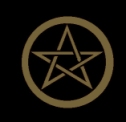|
|
|


| Contents | |
|---|---|
| Home | Back to the Grove's entrance |
| Articles | Articles on Paganism |
| The Message Board | The place to leave all suggestions and comments |
| Book of Shadows | The Book Of Shadows |
| Info | Information on Paganism |
| Celtic Druidism | Some information on Celtic Druidism |
| Herb Lore | Information on various herbs. |
| Gods and Goddesses | Celtic and other Gods and Goddesses |
| View the guestbook | Please view our guestbook |
| Sign the guestbook | Please feel free to sign our guestbook |
| External | |
| Paganlife | A great Pagan forum |
| Beliefnet | A massive and very active online religious community |
| Sacred Texts | A useful resource site |
| Spiral.com | A very good online shop |
| The Willow Grove | Discussion forum |
| Wiccan Wisdom | A informative site about Wicca |
Within the tribal groups there were three distinct and different paths within Druidism.
The Bards were "the keepers of tradition, of the memory of the tribe - they were the custodians of the sacredness of the Word." In Ireland, they trained for 12 years learning grammar, hundreds of stories, poems, philosophy, the Ogham tree-alphabet.
The Ovates worked with the processes of death and regeneration. They were the native healers of the Celts. They specialized in divination, conversing with the ancestors, and prophesizing the future.
The Druids and Druidesses formed the professional class in Celtic society. (Indo-European: drú = strong, wyd=knowledge). They served as the means of communication between commoners and the pantheon of gods for there was no direct interaction. All religious services and rites were exclusively performed by Druids. They performed the functions of modern day priests, teachers, ambassadors, astronomers, genealogists, philosophers, theologians, scientists, poets and judges. They underwent lengthy training: some at say 20 years or more. Druids led all public rituals, which were normally held within fenced groves of sacred trees. In their role as priests, "they acted not as mediators between God and man, but as directors of ritual, as shamans guiding and containing the rites." Most leaders mentioned in the surviving records were male. It is not known whether female Druids were considered equal to their male counterparts, or whether they were restricted to special responsibilities. References to women exercising religious power might have been deleted from the record by Christian monks during the Celtic Christian era.
Since ancient Druidism was an oral tradition, they did not have a set of scriptures as do Christianity and other religions with a holy book do. Some Druidic teachings survived in the Bardic colleges in Wales, Ireland and Scotland which remained active until the 17th century, in medieval manuscripts, and in oral tradition, folk lore and ritual.
Although the Celts had a written language, it was rarely used. Their religious and philosophical beliefs were preserved
in an oral tradition. Little of their early history remains. Most of our information comes from Greek and Roman writers,
who may well have been heavily biased (the Celts invaded Rome in 390 BCE and Greece in 279 BCE). Other data comes from the
codification (and modification) of Celtic myth cycles by Christian monks. The latter included the Ulster Cycle, the Fenian
Cycle, the Cycle of Kings, the Invasion Races Cycle from Ireland, and The Mabinogion from Wales. Unfortunately, much Celtic
history and religion has been lost or distorted by an overlay of Christianity.
The Christian Church adsorbed much of Celtic religion: many Pagan Gods and Goddesses became Christian saints; sacred springs
and wells were preserved and associated with saints; many Pagan temple sites became the location of cathedrals. By the 7th
Century CE, Druidism itself was partly destroyed and forced to continue deeply underground throughout most of the formerly Celtic lands.
There is some evidence that non Druidic Pagan religions did survive in isolated areas of Estonia, Latvia and Lithuania into the 20th
Century.
The Celts did not form a single religious or political group. They were organized into tribes spread across what is now
several countries. The Celts had their main Gods and as tribes moved and changed theses were adapted to the surroundings.
Some of the more famous are: Arawn, Brigid, Cernunnos, Cerridwen, Danu, Herne, Lugh, Morgan, Rhiannon and
Taranis. Many Celtic deities were worshipped in triune (triple aspect) form. Triple Goddesses were often sisters.
Please feel free to email the Web Masterwith any queries.